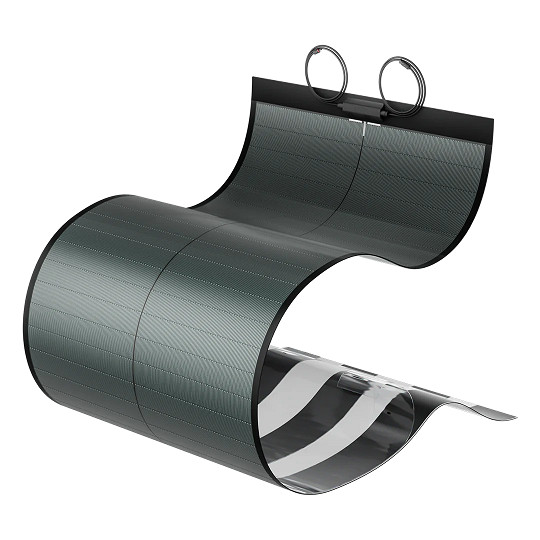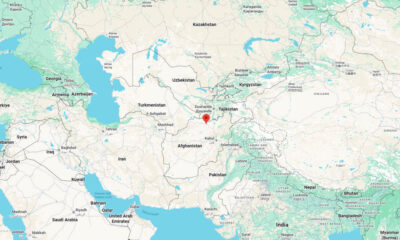Reviews
The Role of Solar Panels and Flexible Solar Panels in Modern Energy

From rooftops to backpacks, solar energy is steadily transforming how we harness power. At the heart of this revolution lie two key technologies: traditional solar panels and their more adaptable counterpart, flexible solar panels. Both play vital roles in enabling cleaner energy—yet each serves distinct needs and environments. This article explores the uses, importance, and driving factors behind these technologies, illustrating why they matter now more than ever.
Sunshine Made Simple: How Solar Panels Work
Solar panels convert sunlight directly into electricity through photovoltaic (PV) cells. When photons from the sun strike the surface of a panel, they excite electrons, creating a flow of electric current. This direct generation of clean power bypasses fossil fuels, reducing greenhouse gas emissions and reliance on centralized power grids.
Key advantages of conventional solar panels include:
- High Efficiency: Rigid panels typically deliver greater energy conversion rates, making them well-suited for installations where space is limited.
- Longevity: Built with durable materials like tempered glass and aluminum framing, they often carry warranties of 20–25 years or more.
- Cost Effectiveness: Manufacturing scale and technological maturity have driven down per-watt costs, making them one of the cheapest sources of new electricity generation.
Because of these traits, solar panels are ubiquitous on residential rooftops, commercial buildings, and utility-scale solar farms. They represent the backbone of today’s renewable energy infrastructure.

Beyond the Roof: The Advantages of Flexible Solar Panels
While traditional solar panels dominate fixed installations, flexible solar panels from BougeRV bring unique benefits that expand solar’s reach. Made from lightweight materials like thin-film solar cells or flexible monocrystalline strips, these panels bend, curve, and conform to varied surfaces.
Consider these standout features:
- Portability: Weighing a fraction of rigid panels, flexible units can be rolled up and packed into backpacks, making them ideal for camping, remote work sites, or emergency kits.
- Versatile Mounting: Their pliability allows attachment to boat decks, vehicle roofs, curved walls, or even tents—places where rigid panels simply won’t fit.
- Durability in Motion: Many are designed to withstand vibration and bending, so they hold up well on off-grid expeditions or marine environments.
These qualities make flexible solar panels a perfect match for adventurers, mobile professionals, and anyone needing a lightweight, adaptable power source out of doors.
Practical Applications: Who Benefits from Solar Technologies?
1. Homeowners and Businesses
Traditional solar panels remain the go-to choice for rooftops and parking canopies. They slash electricity bills, increase property values, and often qualify for government incentives. Whether powering a suburban home or a corporate office park, they deliver consistent, clean energy for decades.
2. Remote and Off-Grid Users
Off-grid cabins, telecom towers, and scientific research stations rely on solar panels paired with battery storage to maintain electricity where the grid can’t reach. Their low maintenance requirements and predictable output are essential for year-round reliability.
3. Outdoor Enthusiasts and Travelers
For hikers, campers, and van-lifers, flexible solar panels provide on-the-go charging for phones, cameras, portable fridges, and lighting systems. Their ability to conform to curved surfaces like RV roofs or inflatable kayak decks ensures power availability regardless of location.
4. Emergency Preparedness
In disaster-prone regions, quick-deploy solar kits—often using flexible panels—can restore critical communication, medical devices, and lighting when conventional power lines fail. Their lightweight design means relief teams can carry more power capacity into affected zones.
5. Specialty Vehicle and Marine Use
Electric boats, yachts, and recreational vehicles increasingly integrate flexible solar panels into their designs. Panels drape seamlessly across curved cabins or bimini tops, offering supplemental power for navigation systems, refrigeration, and onboard electronics.
Why Solar Adoption Matters Today
- Combating Climate Change
By replacing coal, oil, and natural gas, solar energy reduces carbon dioxide emissions that drive global warming. Every kilowatt-hour generated from sunlight rather than fossil fuels represents a step toward a healthier planet. - Energy Independence
Distributed generation—where individuals and communities produce their power—enhances resilience against grid outages and price volatility. Solar allows homeowners, businesses, and remote sites to lock in predictable energy costs. - Economic Growth
The solar industry supports millions of jobs worldwide, from panel manufacturing and installation to research and development in next-generation materials. This workforce drives local economies and fosters innovation. - Technological Innovation
Advances in PV cell efficiency, energy storage, and power electronics continually lower costs and improve performance. Flexible solar panels exemplify this progress by opening new use cases that were once impractical.
Challenges and Future Outlook
While solar technologies have matured, challenges remain. Rigid panels require sturdy mounting and optimal orientation to capture sunlight, and their production involves energy-intensive processes. Flexible panels, although versatile, currently offer lower efficiency and shorter lifespans compared to their rigid counterparts.
Looking forward, ongoing research aims to bridge these gaps. Innovations like perovskite PV cells, roll-to-roll manufacturing, and integrated storage solutions promise even lighter, more efficient, and longer-lasting solar options.
Conclusion: Sunlight for All
In our quest for sustainable energy, both solar panels and flexible solar panels play vital, complementary roles. Traditional panels anchor large-scale and fixed installations with high efficiency and durability, while flexible panels empower mobile, remote, and specialized applications. Together, they democratize access to clean power—from a family’s rooftop to the farthest reaches of the wilderness.
As technology advances and costs decline further, solar energy’s share of the global electricity mix will only grow. Whether you’re weighing a home installation or packing gear for a backcountry trip, understanding the strengths and uses of each solar solution ensures you tap into sunlight’s full potential, wherever you are.

-

 US News5 days ago
US News5 days agoJetBlue flight diverts to Tampa after altitude drop injures at least 15
-

 Breaking News9 hours ago
Breaking News9 hours agoAt least 3 dead, 11 injured after UPS cargo plane crashes near Louisville airport
-

 World1 week ago
World1 week agoU.S. Navy helicopter and fighter jet crash in South China Sea; all crew rescued
-

 World2 days ago
World2 days agoStrong 6.3 earthquake strikes northern Afghanistan; felt across Pakistan
-

 World2 days ago
World2 days agoProtesters storm government building in Mexico after killing of local mayor
-

 World3 days ago
World3 days ago10 people stabbed on train in Huntingdon, England
-

 US News6 days ago
US News6 days agoTrump says U.S. will resume nuclear weapons testing ‘on an equal basis’
-

 US News1 week ago
US News1 week agoDamage reported in Kilgore, Texas following tornado warning




